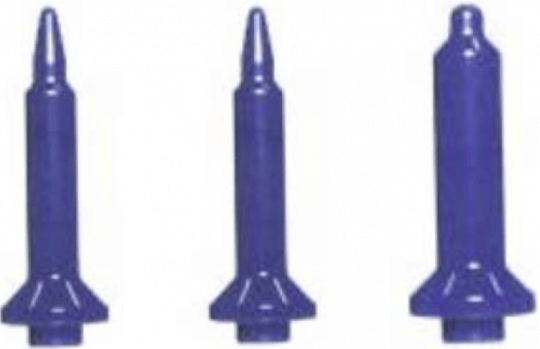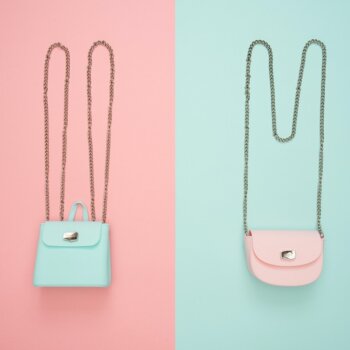
The CJEU DOCERAM case: when is a product feature solely dictated by its technical functionality and so not protected as a Community Design?
15 March 2018
On 8 March 2018, the CJEU handed down a decision clarifying its view on how to assess if a product appearance is solely dictated by its technical function, and hence excluded from Community design protection. The Oberlandesgericht (Court of Appeal) of Dusseldorf had requested for a preliminary ruling concerning the interpretation of Art. 8(1) Community Design Regulation (CDR) as there had been different interpretations of this provision across the EU. The CJEU now decided in favour of the “no-aesthetic-consideration-test” and, in doing so, forced the German courts to change their approach.
LEGAL BACKGROUND
According to Article 8(1) CDR, a Community design shall not subsist in features of appearance of a product which are solely dictated by its technical function. The rationale for this exclusion is that solely technical features should rightly be protected by patents or (where available) utility models, rather than design law.
However, in the past, there have been different approaches taken by the various national courts and EUIPO as to how to determine whether a feature is “solely dictated by its technical function”.
The predominant approach in Germany and various other EU member states (e.g. Spain) was the “multiplicity of forms” approach, which holds that if there is a design alternative possible that fulfils the same function, the design cannot solely be dictated by its technical function. The main argument against this approach is that it would lead to exclusion of protection in only a very few cases . After all, there will almost always be the option to slightly change the appearance of the product, so that almost no product design would be considered to be solely dictated by its technical function on this test.
The alternative approach (followed by the EUIPO, the UK and French courts amongst others) is the “no-aesthetic-consideration-test”. Here the question is whether there were only technical considerations contributing to the design of the product? Put another way, were there any aesthetic considerations that contributed to the design as well? If there were, then the features which were not solely dictated by technical function. However, it is then questionable from whose perspective this question should be answered: the subjective view of the designer or, say, the objective view of a reasonable observer. It has been argued that this test leads to uncertainty and also that it contradicts Recital 10 of the CDR which does not require a design to have aesthetic quality.
BACKGROUND OF THE CJEU REFERRAL
In the case at hand, in the context of a counterclaim for a declaration of invalidity, the Court of Appeal of Dusseldorf had to assess the protectability and in particular the technical function of various registered Community designs which protect weld centering pins:

The Court of Appeal found that there might be a design alternative. However, in view of the two different approaches in the EU regarding the interpretation of the phrase “solely dictated by its technical function” and since this would be decisive for the outcome of the case, the Court referred the following two questions to the CJEU:
(1) Are the features of appearance of a product solely dictated by its technical function, within the meaning of Article 8(1) of [Regulation No 6/2002] which excludes protection, also if the design effect is of no significance for the product design, but the (technical) functionality is the sole factor that dictates the design?
(2) If the Court answers Question 1 in the affirmative:
From which point of view is it to be assessed whether the individual features of appearance of a product have been chosen solely on the basis of considerations of functionality? Is an “objective observer” required and, if so, how is such an observer to be defined?’
THE DECISION OF THE CJEU
- The CJEU considered the wording, context, objective and aims of Art. 8(1) CDR and decided in favour of the “no-aesthetic-consideration-test”. The CJEU’s main argument can be summarized as follows:
In light of Recital 10 of the Regulation, Art. 8(1) CDR is intended to prevent technological innovation from being hampered by granting design protection to features dictated solely by a technical function of a product. If the existence of alternative designs fulfilling the same function (as that of the product concerned) was sufficient in itself to exclude the application of Art. 8(1) CDR and to deny that features of a product’s appearance were solely dictated by its technical function, a single person would be able to obtain several registrations as a Community design of different possible forms of a product incorporating exclusively technical features of a product’s appearance. That way, this person would benefit from exclusive protection for a product without fulfilling the (much stricter) conditions of patent or utility model protection.
Therefore, in order to determine whether the features of appearance of a product are solely dictated by its technical function, it must be established that the technical function is the only factor which determined the design of those features (with the existence of alternative designs not being decisive).
- The CJEU further dealt with the question of how exactly to determine whether the relevant features of a product’s appearance are solely dictated by its technical function and if the assessment must be based on the perception of an ‘objective observer’.
The CJEU’s short answer is “no”: While Art. 6(1) and Art. 10(1) CDR expressly provide that the assessment of the overall impression produced by a design must be made by the “informed user”, Art. 8(1) CDR does not contain an equivalent requirement (e.g. perception of an ‘objective observer’).
In that respect, the CJEU merely said that the national court simply has to take into account all the objective circumstances relevant to each individual case. Those include:
- the design at issue,
- the objective circumstances indicative of the reasons which dictated the choice of features of appearance of the product concerned,
- information on its use or the existence of alternative designs which fulfil the same technical function.
All those circumstances, data, or information as to the existence of alternative designs have to be supported by reliable evidence.
PRACTICAL CONSEQUENCES
The CJEU’s decision paves the way for a harmonized approach to this important question, which is always appreciated by designers and legal practitioners alike as it leads to greater consistency across the EU. However, the decision leaves a number of issues open to further debate, such as from whose perspective the technical function of a product should be assessed and what kind of evidence will be required to prove this? This leaves the door ajar for different interpretations and applications of the CJEU’s criteria and potentially future references to the CJEU.
On the face of it, it seems probable that the application of the “no-aesthetic-consideration-test” will result in more designs for functional products being found invalid on the basis of Art. 8(1) CDR.








